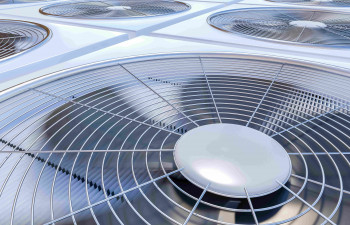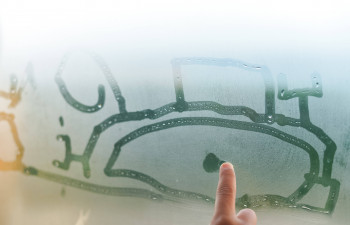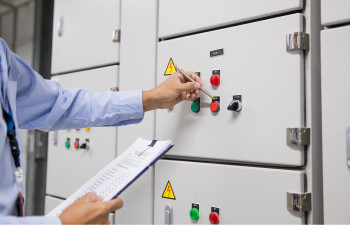What is the difference between an air purifier and a humidifier?
When it comes to improving the quality of your home air, purifiers and humidifiers both have benefits. But it’s important to note that they are not the same and have completely different uses and qualities.
An air purifier is used to create clean, healthy air by removing or inactivating both particle and gaseous pollutants from the air. Air purification devices generally comprise a motor, fan, and air filter. The motor and the fan are used to circulate the air, while the filter is used to remove pollutants from the air as the air passes through the machine.
There are many different types of air filters available, from mechanical HEPA (high-efficiency particulate air) filters to those that ionize the air. All have different strengths and uses, so it’s worth doing your research to ensure you are purchasing the correct type for your needs.
One common feature of an air purifier is that it passes air through the unit and either removes or traps pollutants such as dust, dust mites, pollen, and mould spores via filter media to create a flow of fresh air. Air filters do not add moisture to the air during this process.
A humidifier adds water to the air. There are a number of different methods of doing this, such as boiling water into steam, vibrating water droplets into the air with ultrasonic technology, or using evaporative humidifiers with a fan and a wick. It’s worth noting that ultrasonic humidifiers, when combined with tap water, may introduce tiny mineral particles into the air.
There is currently little research on the effects of these particles, however, some research suggests that they may affect lung tissue. As humidifiers offer no utility in cleaning the air, they are best used with either distilled water and a regular cleaning schedule or in combination with an air purifier, which filters the air and removes dust and other small particles and pollutants from the air.
What is a humidifier and what are the benefits of using one?
There are many different types of humidifiers. Put simply, they are devices that release water vapour or steam into the air to increase moisture levels, or humidity.
The different types of humidifiers include:
- Central humidifiers
- These are built into the HVAC system and are designed to control the humidity of the entire building.
- Ultrasonic humidifiers
- These use ultrasonic vibrations to create a cool mist. There is currently research on the by-product mineral particles that are released from this product and their impact on lung health.
- Impeller humidifiers
- A rotating disk is used to create and distribute a cool mist
- Evaporators
- This method uses a fan to blow air through a moistened absorbent material to add moisture to the air
- Steam vaporisers.
- Steam vaporisers create a warm mist of steam using electricity, which then cools in the unit before it is emitted. This is not a suitable humidifier for a baby or children as the hot water inside this humidifier may cause burns if it spills.
Now let’s look at why a humidifier is useful.
The moisture in your home air can vary. It is affected by the season, weather, and also your home’s location. Usually, humidity levels are highest in the summer and lowest during the winter. The ideal level of humidity for a home is between 30% and 50%. When humidity rises or falls below that, it can cause a range of problems.
Low humidity can irritate your skin, nasal passages, eyes and throat and even cause dry skin. Higher humidity levels can make your home feel uncomfortable and stuffy and can cause condensation on walls, floors and other surfaces, which in turn can trigger the growth of harmful allergens such as moulds, bacteria and fungi. These allergens can cause respiratory problems and exacerbate allergies and asthma.
Asthma and allergies
While a humidifier may alleviate symptoms of low humidity, such as dry and irritated eyes and nasal passages, they do not solve the problem or remove the cause. In fact, some research even suggests that in the long term they may increase the risk of allergies and asthma.
In addition to this, if a humidifier isn’t properly maintained and cleaned, it can develop mould and introduce harmful pollutants into the environment which can trigger asthma and allergy symptoms. So, it’s vital to maintain your humidifier and make sure you are regularly replacing filters.
If you want to improve air quality and reduce or remove allergens from the air to reduce exposure to allergy or asthma triggers, then an air purifier that actually filters the air is an excellent way of doing this.
Mechanical, or HEPA air filters, are designed to remove small airborne particles, such as dust, mould, pollen and pet dander from the air by trapping them on filter media for removal.
Respiratory irritation
As with asthma and allergies, a humidifier can be useful in relieving the symptoms of respiratory irritations and illnesses, such as the common cold or flu. In the case of airborne viruses however, there is research to suggest that a humidifier may actually be useful in reducing the infectiousness of viruses.
However, it is important to note that a humidifier cannot play a role in helping you recover from these illnesses; it can only soothe symptoms such as an inflamed nasal passage, sore throat and dry eyes that may be irritated by dry air.
An air purifier is a much more efficient way to reduce respiratory irritation. Not only will an air purifier equipped with a mechanical filter remove particle pollutants from the air, you can remove airborne viruses and bacteria from your home environment, reducing your risk of catching an infectious disease such as the common cold, flu and COVID.
Dry air
The main strength of a humidifier is to combat illnesses or ailments that are exacerbated by dry air, such as bronchitis and sinusitis. While a humidifier cannot cure these conditions, it can relieve the symptoms.
An air purifier alone cannot soothe symptoms irritated by dry air as it has no facility for adding moisture to the air. When combating both the symptoms and illness, a combination of both a humidifier, for relieving symptoms, and an air filter, for removing the irritants, is the most effective course of action.
How does an air purifier compare to a humidifier?
If you’re looking to make a purchase of an air purifier or humidifier, then it’s important to understand the distinction between the two and the utility of both.
So, which one is more suitable for your needs?
For a baby
If you’re looking to install your nursery with a unit to improve the quality of the air, then you should consider which problem you want to address. Is the air dry?
If you’re tackling a problem with dry air and want to prevent dry, scratchy nose, throat and eyes for your baby then a cool mist humidifier is usually an efficient solution. These humidifiers typically introduce moisture to the air, which then shrinks nasal passages and allows the baby to breathe more easily. It is especially effective for infants with cough or cold symptoms.
In this situation, a warm mist humidifier should not be used as it may have the opposite effect, causing nasal passages to swell, which could impede breathing.
Maintaining a humidity of 40% to 60% can also reduce the infectious capabilities of bacteria and viruses, and help create a healthier atmosphere for your child.
However, if you’re worried about long-term air quality and the amount of pollutants in your nursery, then an air purifier is much better suited to the task. By installing a HEPA purifier with an activated carbon filter, you can trap and remove particle pollutants such as pet dander, mould spores and dust, along with potential gaseous toxins from cleaning products, paint, and other volatile organic compounds.
For allergens
A humidifier has absolutely no utility in reducing the allergen level in the air. In fact, some studies have shown that a humidifier may actually improve the survival rates of dust mites in the environment. A humidifier can alleviate the symptoms caused by allergic reactions, such as a congested nose, dry throat and itching. But it cannot reduce allergens present in the air.
If you’re interested in removing allergens such as dust, pet dander and pollen from the air, then two types of air cleaning devices are well-suited to this task, mechanical air filters and electronic air cleaners.
Mechanical air filters, such as HEPA filters, remove allergens from the air by capturing them on filter material for later removal.
Electronic air cleaners, such as electrostatic precipitators, work by passing air through an ionization section. This gives the particles an electrical charge. These charged particles are then trapped on a flat plate with an opposite charge for removal.
You may also consider an ion generator, which fuses charged ions to airborne particles. This enables them to gather on nearby surfaces, such as walls or surfaces, for easy cleaning and removal. However, this process can create the potentially harmful by-products of ozone and nitrogen oxides, so care should be taken to verify that such devices are not harmful. This can be done easily by choosing an air purifier certified by Eurovent.
For asthma
A humidifier can ease the symptoms of asthma if dry air is exacerbating them; however, it will not have an effect on the asthma or its causes. In fact, there is evidence to support high humidity levels with an increased rate of asthma attacks as it can encourage the growth of harmful bacteria, dust mites, and mould.
As most asthma attacks are triggered by airborne pollutants, an air purifier is a sensible purchase as it can remove the pollutants that irritate asthma sufferers.
With one in 12 adults suffering from asthma it’s a common illness with a wide range of symptoms, from coughing and wheezing to alarming attacks. People suffering from asthma have inflamed bronchial tubes. This means that airborne pollutants can further irritate the respiratory system of asthma sufferers and increase the frequency and severity of symptoms.
Using an air purifier with the ability to remove both small and large pollutants from the atmosphere, such as a mechanical HEPA filter, can make a significant difference for asthma sufferers and ease their symptoms.
Can I use an air purifier and a humidifier together?
As we’ve discussed in this article, while an air purifier and a humidifier both work to create a healthier, cleaner environment, they both perform different functions. An air purifier works on removing airborne pollutants from the home, while a humidifier works on adding moisture to the air.
As such, they can be used in combination. However, the units should be kept apart as the moisture created from a humidifier may limit the utility of the air purifier, clog the filters or even encourage the growth of harmful mould and bacteria on the filter.
We suggest keeping the units at opposite ends of the room and taking care to maintain both frequently. For a humidifier, this means frequent cleaning and disinfecting and also using distilled water where possible. For an air purifier, this means monitoring the filters and cleaning or changing them regularly.






